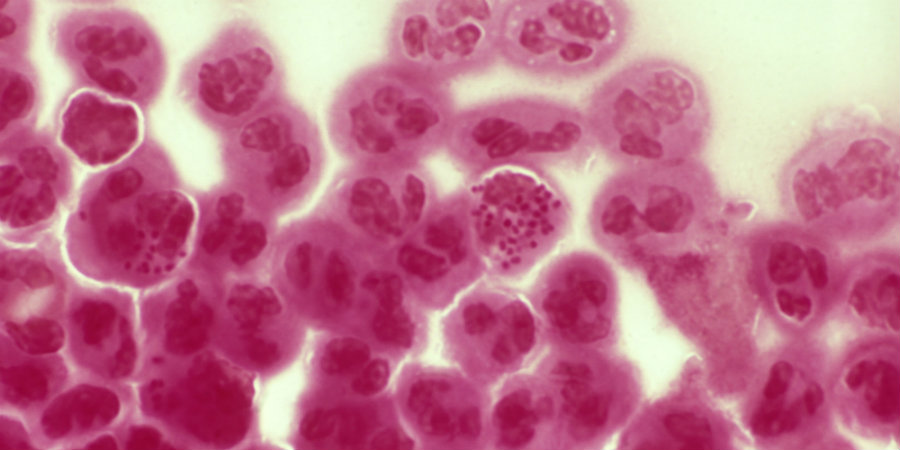The CDC highlighted new cases of gonorrhea resistant to conventional antibiotics as a dangerous epidemic that will affect at least 800,000 Americans each year.
The cases were studied in Hawaii, where six men and one woman were effectively cured. But the bacteria occasioning the disease displayed resistance to azithromycin and ceftriaxone, the most common drugs to treat STDs.

There is a national concern from physicians and epidemiologists about the cases that have not been diagnosed, as gonorrhea is hard for the patient to detect by itself.
“What’s unique about this cluster now identified in Hawaii is that these strains, we’ve really never seen before,” stated Dr. Gail Bolan, director of the CDC’s STD Prevention division.
Gonorrhea or ‘the clap’
Gonorrhea, a disease so old that it appears in the Old Testament, can affect both men and women, causing genital, throat, and rectal infections. It is spread by having vaginal, anal, and oral intercourse with an infected person. The disease can be transmitted from mother to baby during childbirth, which can cause blindness unless doctors apply erythromycin to the child’s eyes.
Just like most STDs, the most efficient way to prevent gonorrhea is sexual abstinence. But if that is not a possibility, the best course of action is always to use condoms and to try and maintain a monogamous relationship with a person that has been tested for STDs.
In the long term, gonorrhea can cause infertility and pelvic or abdominal pain. In men, it can cause swelling of the testicles and sterility. In severe cases, the disease can spread to the blood or ligaments and become lethal. One of the most common complications of gonorrhea is the appearance of skin pustules and organ inflammation.
“Gonorrhea is one of the most common sexually transmitted infections, but most people do not realize they have it. The only way they find out is through testing,” asserted Dr. Bolan.
What’s the risk of infection?
People that have sex with men regularly are more likely to become infected with the disease, and the likelihood increases if the person has multiple sexual partners. It is advised for gay and bisexual males to be tested for gonorrhea each year to avoid transmission and infection.
The CDC assures that most cases of gonorrhea go unnoticed and untreated as its symptoms are not particularly scandalous. At least 88 million new cases of gonorrhea occur each year, and it caused over 3,000 deaths in 2013. By far, Africa is the continent with the most cases of the disease, reaching to over 117 cases per 100,000 habitants, closely followed by India and adjacent countries. It has become the second-most-common bacterial STI, next to chlamydia.
Gonorrhea is characterized by a burning sensation during urination, accompanied by white or yellow fluid discharge from the genitals. Women usually do not display any symptoms, or if any, these are often mistaken with those related to vaginal infection. The most decisive symptom is vaginal bleeding between periods.
Doctors test the patient’s urine for gonorrhea, although they may also employ swab screenings to gather samples from the throat or rectum.
A person treated for gonorrhea is advised to undergo full treatment as recommended by the physician and wait at least a week after it has ended to start having sex again. Patients that are cured of gonorrhea can become infected again if they undergo intercourse with an infected partner.
The standard treatment recommended by the CDC is a shot containing ceftriaxone and oral intake of azithromycin, but this is not enough to get rid of the infection, as it only serves to moderate the symptoms.
A new drug is on the way
A drug known as ETX0914 is being tested as it represents the new generation of antibiotics to tackle gonorrhea. It was tested on 179 subjects, including 167 men and 12 women, infected with the disease. All of the patients that received a 3g dose and 98 percent of those who received a 2g dose were cured. Although there were some side effects, none of them was severe.
“We are very pleased with these promising results which support the continued development of ETX0914 through further clinical studies,” stated Dr. Stephanie Taylor, head of the study performed at the Louisiana State University.
Dr. Taylor said that ETX0914 is an oral antibiotic and is the latest response to the CDC’s call for dealing with the cases of drug-resistant gonorrhea. There are few oral treatment options as the CDC has classified the disease as an “urgent public health threat” that must be dealt with as soon as possible.
The development of ETX0914 has been labeled with a Fast Track status by the U.S. Food and Drug Administration to tackle this epidemic effectively before it becomes too late. Overexposure to antibiotics can help an organism evolve into developing resistance, which is the case of Neisseria gonorrhoeae and similar bacteria such as Staphylococcus aureus, known to have developed a resistance to methicillin.
Source: CDC
